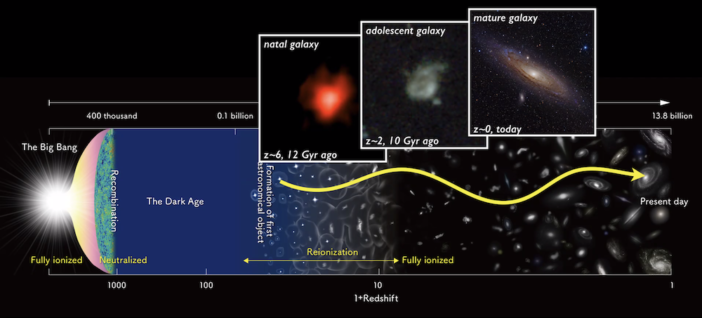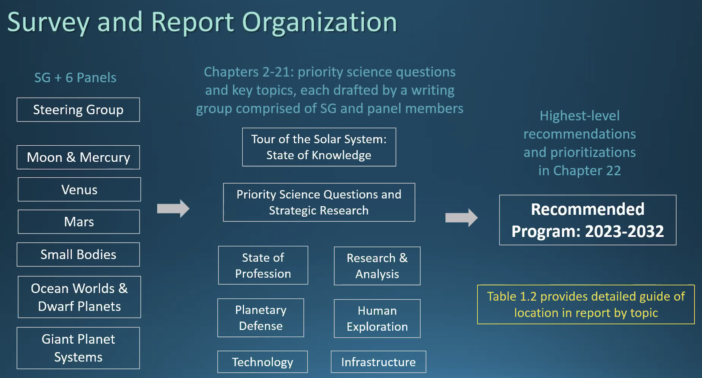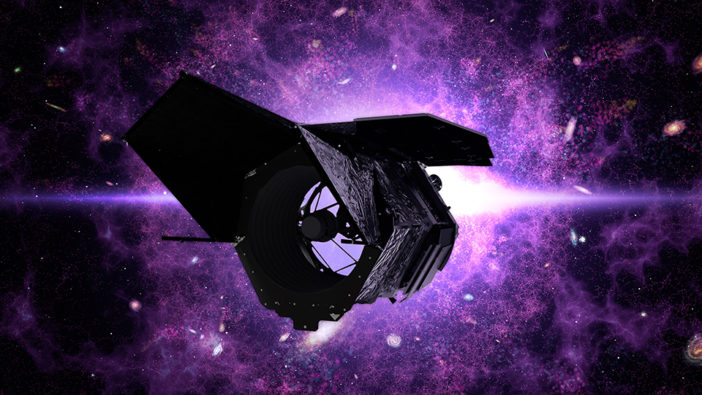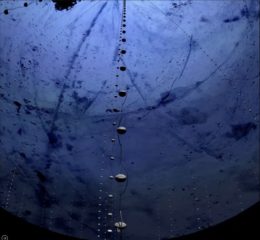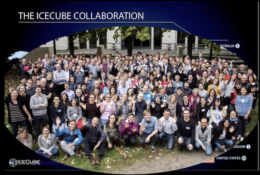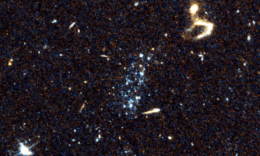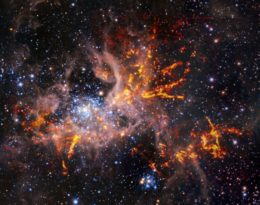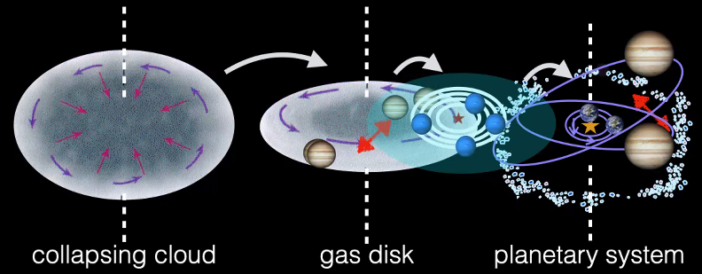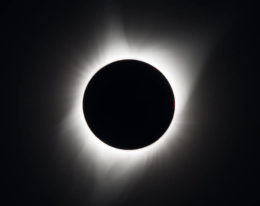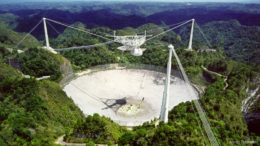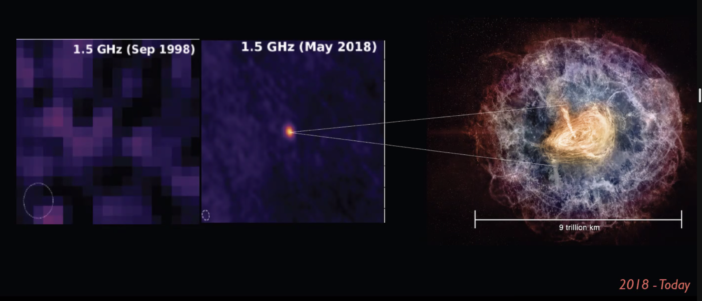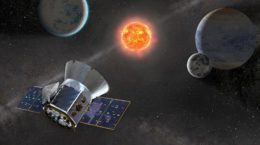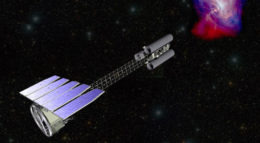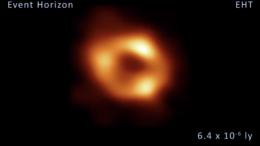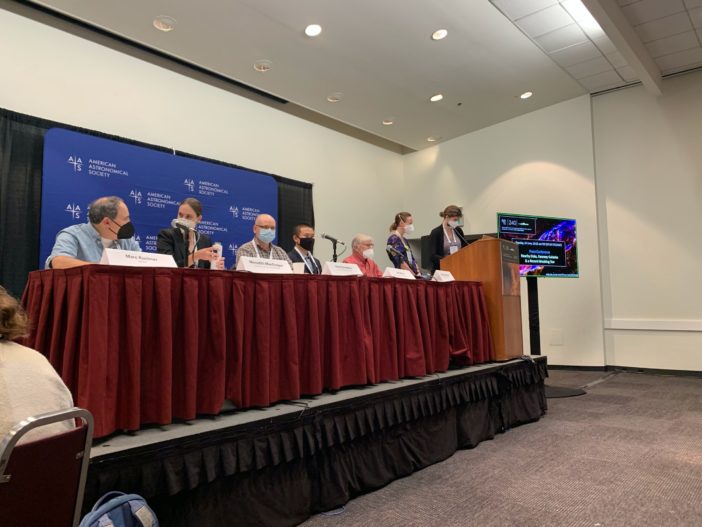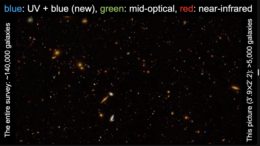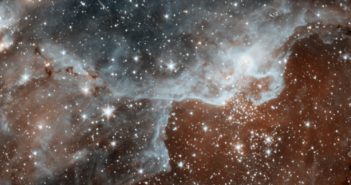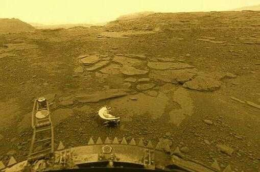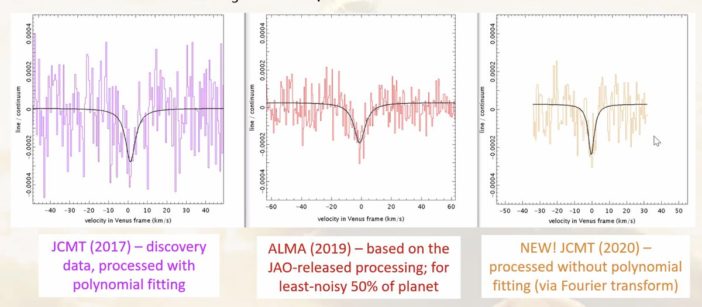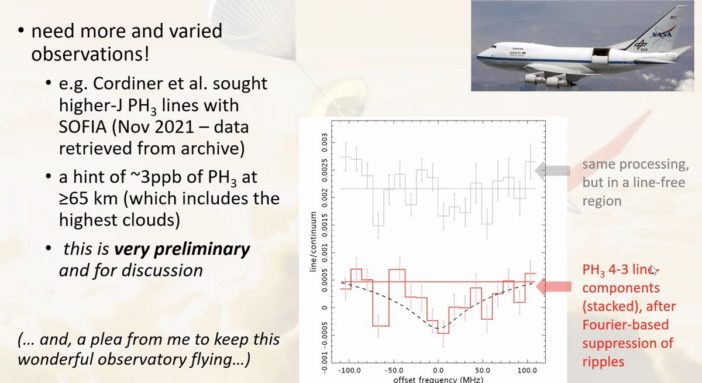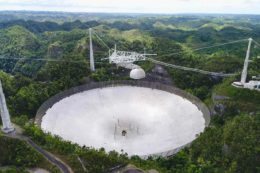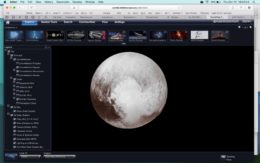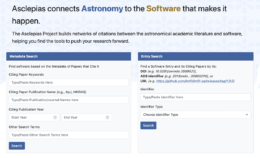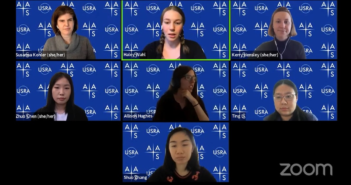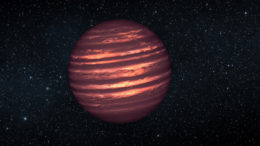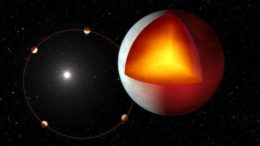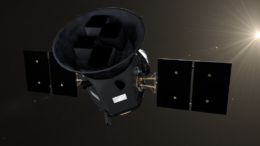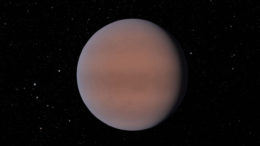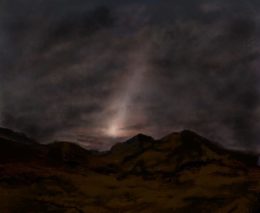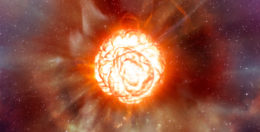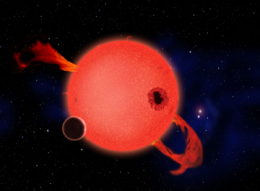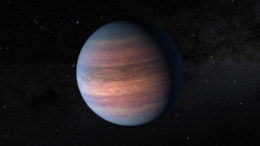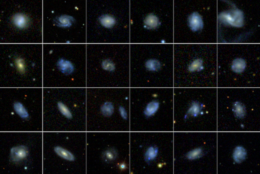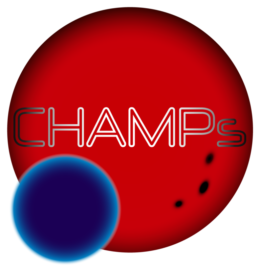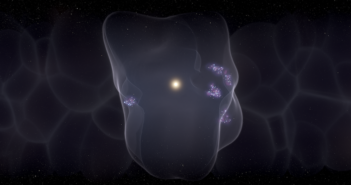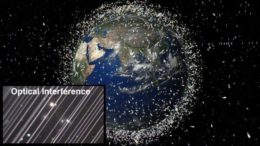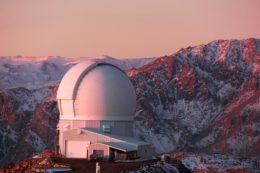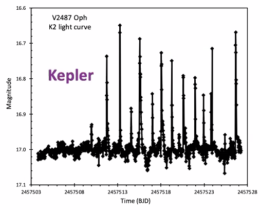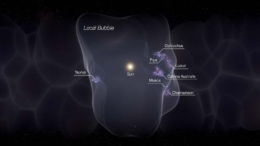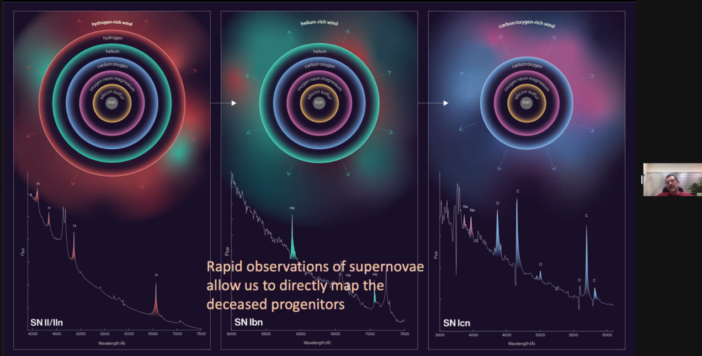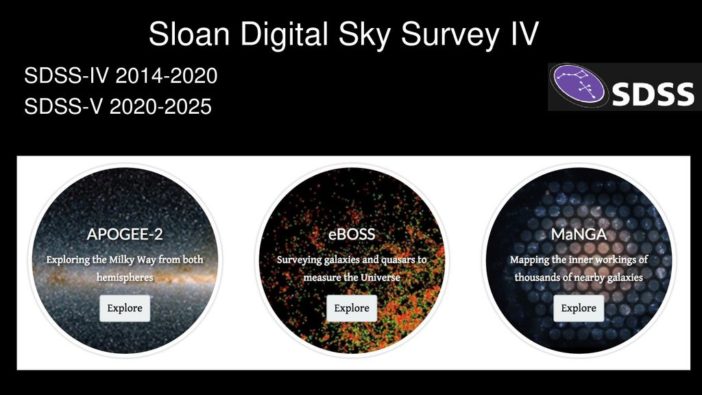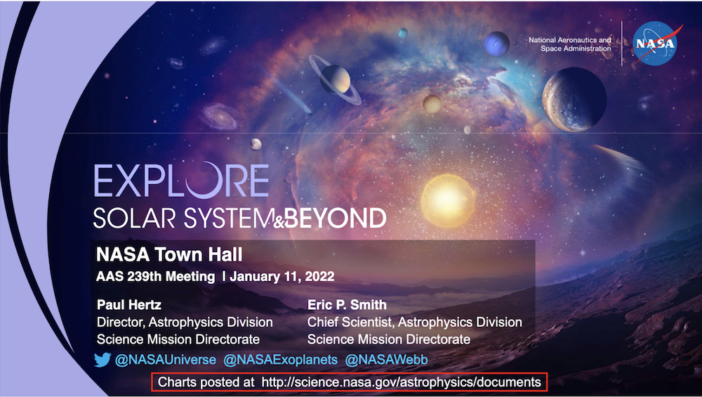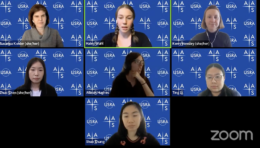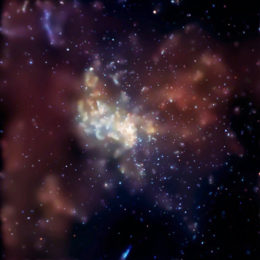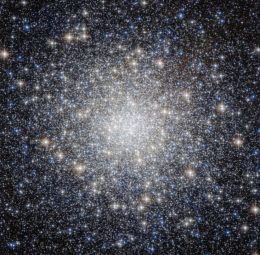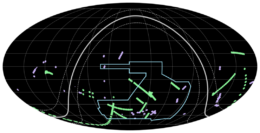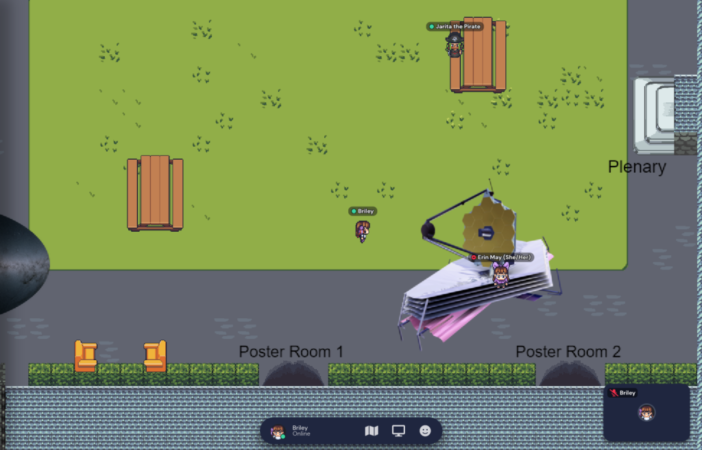
AAS 240: Day 4
Editor’s Note: This week we’re at the 240th AAS meeting in Pasadena, CA, and online. Along with a team of authors from Astrobites, we will be writing updates on selected events at the meeting and posting each day. Follow along here or at astrobites.com for daily summaries, or follow @astrobites on Twitter for live coverage. The usual posting schedule for AAS Nova will resume on June 21st.
Table of Contents:
- George Ellery Hale Prize: Sami Solanki (Max Planck Institute for Solar System Research)
- Introducing Current Research Into Your Classroom With Astrobites
- Press Conference: Dusty Environments Near and Far
- Plenary Lecture: Charting the Chemistry of Galaxies across Cosmic Time, Allison Strom (Princeton University)
- Planetary Decadal Survey Town Hall
- Roman Town Hall
- Plenary Lecture: Gail Zasowski (University of Utah)
- Lancelot M. Berkeley Prize: Paul Scholz (University of Toronto)
George Ellery Hale Prize: Sami Solanki (Max Planck Institute for Solar System Research) (by Abby Lee)
Solanki began his talk by apologizing for not being at AAS 240 in person. But he had a very good excuse — he and the Sunrise team are preparing to launch their stratospheric solar observatory in Sweden any day now — as soon as weather permits! The goal of the Sunrise mission is to resolve the fine structure and dynamics of the Sun’s magnetic fields. They chose to build a balloon-borne observatory (as opposed to a space-based observatory) with a 1-meter telescope because it’s much cheaper. The Sunrise mission will also be the largest telescope studying the Sun to ever leave the ground. The balloon will depart in Sweden and traverse over Greenland.
Solanki listed some of the many reasons why studying the Sun is important: (1) The Sun supplies Earth with 99.96% of its energy, (2) it produces space weather that can negatively impact technical systems, (3) it is the only star we can resolve and study in detail, (4) it is a gigantic plasma physics laboratory, where you can reach parameter regimes you cannot recreate on Earth, (4) it affects our climate, and (5) it’s fun!
This third run of Sunrise includes a new gondola and three ambitious new instruments. It will probe a much larger height range of the Sun than previous Sunrise runs by studying the chromosphere, the middle layer of the Sun’s atmosphere and the most poorly understood. Whereas previous runs of Sunrise have only been able to probe the photosphere, the lowest layer. Observing the chromosphere with such high resolution will be helpful in modeling sunspots and interactions between the Sun’s magnetic fields.
The second half of Solanki’s talk focused on the question of whether the Sun’s variability could cause climate change. The Sun is variable mostly due to its sunspots, and since 1610, there have been two documented events where low numbers of sunspots coincided with mini ice ages. However, only two documented events are not enough to draw strong conclusions. Furthermore, by measuring the relation between the Sun’s flux and number of sunspots, astronomers discovered that the Sun is actually brightest at times of high solar activity, i.e., when the number of dark sunspots is largest. So the Sun’s variability cannot have caused climate change. Another piece of evidence is that the Sun’s flux has been uncorrelated with temperature since ~1970. Before then, the Sun’s flux actually did correlate to a certain extent with Earth’s temperature, but it is clear now that we cannot blame the Sun for climate change.
In the last 10 minutes of Solanki’s talk, he emphasized that the Sun is not an outlier. They compared stars with similar temperatures, rotation periods, surface gravities, etc., and found that the Sun is typical in its variability to other Sun-like stars. There’s still much to learn about the Sun and its variability, and we are all looking forward to the new data from the Sunrise telescope!
See live-tweets of this session here, by Luna Zagorac.
Introducing Current Research Into Your Classroom With Astrobites (by Briley Lewis)

Astrobiters Sabina Sagynbayeva and Graham Doskoch discussing lesson plans with participants. [Briley Lewis]
This session was the work of many Astrobiters: Briley Lewis led the session proposal and logistics, Graham Doskoch and Pratik Gandhi designed the workshop slides and plan, and Katya Gozman, Ryan Golant, Sabina Sagynbayeva, Macy Huston, and Isabella Trierweiler helped facilitate the workshop.
The workshop began with a brief intro on Astrobites and what we do, and went on to describe our three lesson plans, providing examples of possible usage for each. The first lesson plan uses Astrobites articles as reading assignments, with comprehension questions to accompany the readings. Optionally, if the paper has an associated press release, students can read the original paper and press release as well to compare the different genres/styles. The second lesson plan has students pick a topic they’re interested in and do an Astrobites “literature review” to learn more. They complete this mini-research project by giving a small presentation on what they found. Lastly, the third lesson plan actually has students write their own Astrobite on a new paper — Michael Hammer recently wrote a bite about this process, and if you’re interested in publishing some of your class’s bites, email us at education@astrobites.org!
Most of the workshop focused on discussion between the educators in attendance, facilitated by Astrobites authors. They discussed the various lesson plans, how they would use them in their own classes, and any changes they would make. One participant commented that having resources like these pre-made lesson plans could lower the threshold to using Astrobites in their classroom, and another mentioned that the fact we have Astrobites in several languages (especially Spanish) is very helpful. Some of the ways people think of using Astrobites surprised us as well, from using it in undergrad mentorship to introduce students to a project to using Astrobites as preparation reading for colloquia to help undergrads understand the talks.
We also sought feedback from educators on how to improve Astrobites’ education offerings, and the participants had great ideas! Multiple people asked for a platform to share their lesson plans and what they’ve done with Astrobites, and we’re excited to say that’s something we’ve been thinking about too — so keep an eye out for that! Others suggested showing the editing process for a few cases to help students understand how articles are shaped into their final form, and adding some key takeaways at the bottom of bites to help instructors quickly see what’s relevant to their courses. If you have suggestions or want to second any of these ideas, feel free to email us — we focus our efforts based on interest from the community!
Also, if you’re interested in what education work we’re doing here at Astrobites, make sure to sign up for our mailing list here to stay in the loop. You can also check out the slides from the workshop, and our “Teaching with Astrobites” page on our website for more info!
Press Conference: Dusty Environments Near and Far (by Kerry Hensley)
The final press conference of AAS 240 was all about dust. Love it or loathe it, dust is everywhere in our universe, from the surfaces of planets to the space between stars.
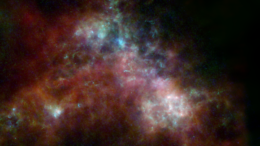
Composite far-infrared and radio image of the Small Magellanic Cloud. [ESA, NASA, NASA-JPL, Caltech, Christopher Clark (STScI), S. Stanimirovic (UW-Madison), N. Mizuno (Nagoya University)]
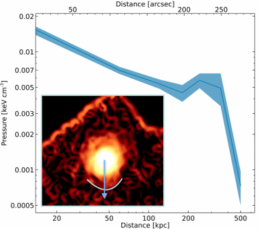
Pressure measurement across the shock wave detected in Abell 98. The inset image marks the axial shock with a white curve. [Arnab Sarkar]
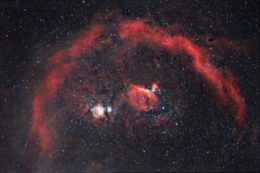
Astrophotograph of Barnard’s Loop, which appears as a red semicircle in this image. [Wikipedia user Hewholooks; CC BY-SA 3.0]
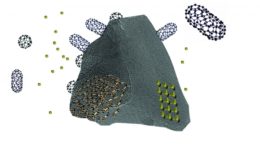
Schematic of the formation process. Silicon atoms (green) leave the grain, leaving carbon atoms (black) to form sheets of graphene and then nanotubes. [Jacob Bernal/University of Arizona]
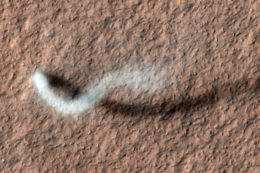
Aerial view of a dust devil on Mars. [NASA/JPL-Caltech/Univ. of Arizona]
See live-tweets of the session here, by Luna Zagorac.
Plenary Lecture: Charting the Chemistry of Galaxies across Cosmic Time, Allison Strom (Princeton University) (by Sabina Sagynbayeva)
Dr. Allison Strom is a postdoctoral fellow at Princeton University, soon to be a faculty member at Northwestern University in the fall. She started off her plenary lecture with a message: she wanted the talk to be useful to everyone, independent of research field, because chemistry is everywhere. To expand this point further, she reminded the audience that large structure formation (like galaxies!) is dominated by dark matter. However, there is still gas everywhere in and around galaxies, which affects smaller structure formation (like stars and supernovae), and this becomes as important as dark matter when we study larger scales.
We know that galaxies are not similar to each other — we observe a huge diversity of them. Despite the fact that we now can observe different kinds of galaxies, we still want to understand the individual members of those types. Studying chemistry is key to this. Dr. Strom calls chemistry the DNA of the galaxies, because it can essentially help us study their evolution. In the figure below, Dr. Strom showed the diversity of known galaxies at different redshifts.
Now, the smaller objects (smaller than galaxies, like stars and star clusters) become important. By looking at stellar metallicity in a galaxy, we can track a galaxy’s mass and growth. This is called the mass–metallicity relation. Mostly these relations for different galaxies show that a galaxy’s mass is bigger if it has more metal-rich stars. But, some other features can be observed as well. For example, results from a study in 2002 shows that galaxies are losing heavy elements through outflows. Galaxies are far away and challenging to observe, but the Hubble Deep Field changed extragalactic astronomy. Spectra of HII regions reveal detailed astrophysics at all redshifts. They show electron temperature, and by measuring electron temperature, we can measure metallicities. But, by redshift z~2, the entire rest-optical spectrum shifts to the near-infrared (we don’t see features in optical)! Therefore, better instruments had to be built — the past 10 years were crucial in this field, and we now have a lot of data for high-redshift galaxies. Changes in the mass-metallicity relation reflect the evolving impact of galaxy outflows. A recent study found that high-z galaxies have higher gas fractions and more efficient outflows. It turns out that redshift z=2 galaxies are very alpha-enhanced (higher O/Fe — oxygen/iron abundance). The main takeaway from this: high O/Fe has now been repeatedly confirmed at high redshifts!Dr. Strom created the package GalDNA (Galaxy DNA!) to measure the physical conditions in high-redshift star-forming galaxies. Chemical analyses are important not only from the perspective of star formation and their evolution, but also the end stages of stellar lifetimes. When stars explode, they eject a lot of chemical elements into space. Type Ia supernovae create a lot of iron and you can measure the oxygen to iron abundance and link the abundance patterns with galaxies across cosmic time.
Dr. Strom is also excited about the launch of JWST. JWST carries a diverse suite of powerful new near- and mid-infrared spectrographs. One of the principal use cases is ultra-deep spectroscopy of high-redshift galaxies. Differences in abundance ratios can introduce systematic biases: most of the methods are for low-shift galaxies, but JWST can help us with this by building more accurate abundance diagnostics. CECILIA is an observing program led by Dr. Strom that will unlock the power of JWST galaxy spectra, and it was inspired by Cecilia Payne-Gaposhkin.
Another important instrument for high-redshift galaxies is the Subaru Prime Focus Spectrograph (PFS) which will obtain spectra of hundreds of thousands galaxies. If we combine observations from the Subaru Prime Focus Spectrograph and the Nancy Grace Roman Space Telescope, they would follow the transition of the galaxy population from star-forming to quiescent.
Dr. Strom concluded by saying that the field needs all of us. Meaning that there are so many questions that are yet to be answered, and she encourages students to join the field.
You can read Sabina’s interview with Dr. Strom here.
See live-tweets of this session here, by Sabina Sagynbayeva.
Planetary Decadal Survey Town Hall (by Sabina Sagynbayeva)
The town hall was led by David H. Smith, Robin Canup, and Philip Christansen. They start with comparisons to the prior Decadal survey like identification of top-level science questions and research activities and prioritization of large/medium space missions. The key distinctions of this report include consideration of the state of the profession and actions for enhancing diversity, equity, inclusion, and accessibility (DEIA); organization by significant, overarching scientific questions rather than by destinations; greater emphasis on astrobiology; inclusion of planetary defense; and awareness of human exploration plans and identification of cooperation opportunities.
The prioritized themes of this decadal survey are Origins, Worlds & Processes, Life & Habitability, and Exoplanets.They launched a new State of Profession writing group. The core principles of it are:
- Broad access and participation essential to maximizing excellence
- Substantial evidence shows that implicit biases affect judgements, even among those sincerely committed to equal opportunity and treatment
- Structures and processes designed to address implicit biases also address explicit biases
- Implementing objective measures of self-examination and evidence gathering supports DEIA improvement and builds community trust
- Strong system of equity and accountability needed to recruit, retain, and nurture the best talent
The other priority is increasing investment in Research & Analysis (an intellectual foundation that ensures NASA’s activities maximize the expansion of knowledge) to achieve a minimum annual funding level of 10% of the Planetary Science Divison annual budget by mid-decade, via a progressive ramp-up in funding allocated to the openly completed Research & Analysis programs. Progress in achieving this goal should be evaluated mid-decade.
The National Science Foundation (NSF) should continue (and if possible, expand) support of existing and future observatories important for solar system studies (e.g., NOIRLab, ALMA, Rubin, TMT, GMT, ngVLA) and related PI-led and guest observer programs, and involve planetary astronomers in future observatory plans and development. NASA and NSF would realize greater return on Research & Analysis investments by streamlining mechanisms to support science of benefit to both agencies. NASA and NSF should develop a plan to replace ground-based radar capabilities lost with Arecibo, which are crucial for planetary defense and near-Earth object studies.
Astrobiology also plays a central role in Decadal research strategy (3 of 12 priority science questions) and in many current and planned missions. Dynamic habitability and the co-evolution of planets and life are key concepts that require mechanisms to support interdisciplinary and cross-divisional collaboration. Dedicated focus on research related to subsurface life is warranted given advances in understanding the diversity of terrestrial life, and known subsurface fluids on Mars and icy ocean worlds NASA should accelerate development and validation of mission-ready life detection technologies.
Returning new samples from Mars is a priority because diverse, sophisticated lab instruments on Earth can precisely measure key isotopes, trace elements, and detailed petrologic structures.
Another exciting priority is the first priority flagship goes to Uranus! The Uranus Orbiter and Probe will deploy an atmospheric probe to characterize Uranus’s atmosphere, and will be sent for the mission in 2032!
The second priority new flagship is Enceladus Orbilander! Enceladus is an optimal locale to sample extant subsurface ocean through study of freshly ejected plume material. Study of habitability and life detection at Enceladus is such a high priority that it is included in both New Frontiers and Flagship class missions to provide alternative approaches to pursue this critical science.
To know more about the survey and its prioritized missions and budget allocations, you can read the report!
Roman Town Hall (by Macy Huston)
The Roman Town Hall began with a brief overview of the mission. The Nancy Grace Roman Space Telescope is the next upcoming flagship NASA space telescope, following the recent launch of JWST. It will have similar sensitivity and resolution to the Hubble Space Telescope and a field-of-view ~100x the size of Hubble’s. It will study exoplanets, dark energy, and galaxies through wide-field infrared surveys. The 2.4 meter telescope will host two instruments: the Wide Field Instrument (WFI) and Coronagraph Instrument (CGI). It will reside in the Sun-Earth L2 Lagrange point and produce an astounding 11 terabytes of data per day!Roman’s current launch date is scheduled for October 2026. In addition to its large field-of-view, the telescope boasts a rapid slew and settle rate, allowing for the maximum amount of time spent on-sky, gathering data. The telescope will not have to deal with the Earth getting in the way or with the South Atlantic Anomaly. In addition, its point spread function and flux calibration are precisely characterized. Data will be processed at the Space Telescope Science Institute (STScI) and Science & Data Center for Astrophysics & Planetary Sciences at Caltech (IPAC), with a public archive based on STScI cloud servers.
The WFI will have a 0.281 square degree field-of-view, capable of photometry and spectroscopy in the 0.48-2.3 micron wavelength range. Many individual parts are already completely built and tested, and the instrument will be ready for full system integration and testing in 2023. The CGI will be a technology demonstration for space-based direct imaging and spectroscopy of planets, blocking the overwhelming light from their host stars. The first of its kind in space, the CGI will perform ~100-1,000x better than current ground-based facilities and is a critical stepping stone on the path toward characterizing exo-Earths.
The Roman team prioritizes community engagement in the mission, developing community definitions and ownership for the core surveys: the High Latitude Wide Area Survey, the High Latitude Time Domain Survey, and the Galactic Bulge Time Domain Survey. The core surveys will address many priority areas from the Astro2020 decadal survey: exoplanet demographics, stellar astrophysics, habitable worlds, multi-messenger astronomy, new physics, the dynamic universe, and galaxy growth.
The Roman mission also aims to be very inclusive, involving many different institutions and career stages. Be on the lookout for a couple of upcoming ways to get involved: a call for white papers and a NASA Research Opportunities in Space and Earth Science (ROSES) solicitation. ROSES will provide funding opportunities to work on preparation for WFI science, the creation of infrastructure teams for long-term support for WFI, and a coalition to conduct the CGI technology demonstration. More information and technical specs about Roman are available on the IPAC and NASA Goddard websites.
Plenary Lecture: Gail Zasowski (University of Utah) (by Pratik Gandhi)
Dr. Gail Zasowski, Assistant Professor at University of Utah, presented the penultimate plenary lecture of AAS 240. Focusing on our own galaxy, she opened with the statement “The Milky Way is a Galaxy: a Deceptively Simple Assertion.” Although it’s obvious that the Milky Way is indeed a galaxy, Dr. Zasowski was trying to discuss the idea that the Milky Way might be an outlier compared to other similar galaxies.
The talk started with a big-picture discussion of the two primary ways that we study galaxies: through theoretical simulations and via observations. Simulations have the advantage of letting us study the full time evolution of galaxies, while observations include both large-scale galaxy surveys and more focused follow-ups of individual galaxies.
The primary difference between studying other galaxies and studying the Milky Way is that for our galaxy, we’re observing it from within. So how do we study the Milky Way? The key idea here is that we can resolve and observe individual Milky Way stars, small pockets of gas and dust — which we cannot do for most other galaxies! This allows us to study star-by-star dynamics as well as obtain detailed elemental abundance distributions and patterns. However, we don’t have a bird’s-eye view of our galaxy, which makes it harder to study its overall structure and integrated light flux. An analogy Dr. Zasowski provided was looking at a map of Salt Lake City from far above versus standing on a street corner in downtown Salt Lake City and looking in individual shop windows, as shown in Figure 2. She emphasized that both perspectives are crucial for getting a full picture of how galaxies form and evolve! Next, the big question: is the Milky Way really unusual? Dr. Zasowski provided the important reminder that what’s considered “typical” for galaxies depends on the property being considered. However, two areas in which the Milky Way seems unusual is that it formed fewer stars in its star formation history than expected (more “quiescent”), and that its outskirts are more metal-poor than expected. A couple of other interesting and potentially unique features are that the Milky Way has a number of massive satellite galaxies around it, which is relatively rare, and that the Milky Way’s spatial extent is smaller than expected given its mass. There are two main approaches to answering the question of the uniqueness of our galaxy — looking inwards at its constituents, and looking outwards to compare the Milky Way to other galaxies; Figure 3 shows all of the different techniques/surveys. Dr. Zasowski reminded us that we often try to study “Milky Way analogs”: other galaxies that we think might be similar to ours, in order to predict or compare to Milky Way properties. However, it’s complicated to figure out which galaxies are good analogs, and as Figure 4 shows, if we try to find another galaxy exactly like ours, we are probably not going to!
Venn diagram of 3,036 nearby galaxies, some similar to the Milky Way in star formation rate, some in spatial size, some in bulge ratios, but none that match all properties. [Boardman, G. Z. et al. 2020]
Looking ahead to upcoming studies, Dr. Zasowski points out that we need to observe a huge number of stars across the entire galaxy of all the different types — which is what surveys like SDSS-V will help us with. Right now is a really exciting time to be studying the Milky Way and figuring out whether we really are unique!
See live-tweets of this session here, by Sabina Sagynbayeva.
Lancelot M. Berkeley Prize: Paul Scholz (University of Toronto) (by Isabella Trierweiler)
In the last plenary talk, Dr. Victoria Kaspi and Dr. Paul Scholz shared discoveries from the CHIME and Fast Radio Burst collaboration. About the size of five hockey arenas, CHIME (the Canadian Hydrogen Intensity Mapping Experiment) is a radio telescope which was originally meant to build a 3D map of hydrogen in the Milky Way. However, it turned out to be a really good tool for finding fast radio bursts (FRBs), which are sudden strong pulses of radio waves. The telescope is made up of four half cylinders, each of which houses many smaller antennae. As a whole, it functions like a collection of multiple small telescopes, creating 1,024 beams on the sky!
CHIME is great at finding FRBs because it can cover large swaths of sky, waiting for the radio pulses to arrive. In the first year of the search, CHIME found 500 FRBs! These bursts come from all over the sky, last up to a few milliseconds, and arrive at a rate of about 1,000 per day.
A particularly useful type of FRB is one that repeats, with several pulses clustered together in time. The repetition helps pinpoint the location of the FRB source, because it allows other telescopes to make follow up observations. So far, the majority of FRBs come from the outskirts of massive galaxies — usually galaxies that have ongoing star formation. Dr. Kaspi and Dr. Scholz do point out an interesting outlier however, which originates in a dwarf galaxy.
Addressing the question of what the sources of FRBs are, Dr. Scholz shows an FRB that he found to be a magnetar, or a highly magnetic, rotating neutron star. The energy of the FRB is consistent with a magnetar, and the location identified for the FRB source is a reasonable place for a magnetar to form. Motivated by this discovery, Dr. Scholz and Dr. Kaspi wanted to figure out whether all FRBs are magnetars, or if their observed magnetar is an unusual case. So far, the magnetar they found lives in a different environment than most other repeating FRBs, so it looks like magnetars are not a universal source of FRBs. The search for FRB sources continues!See live-tweets of this session here, by Isabella Trierweiler.
